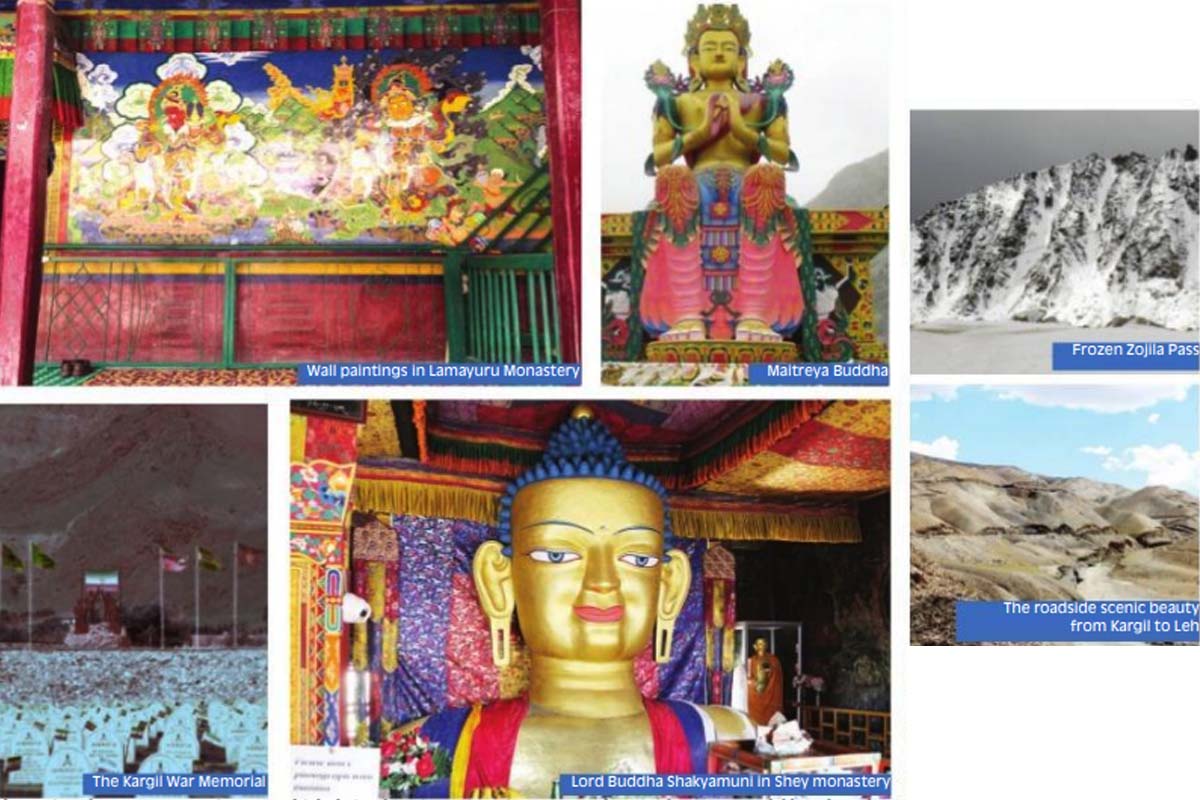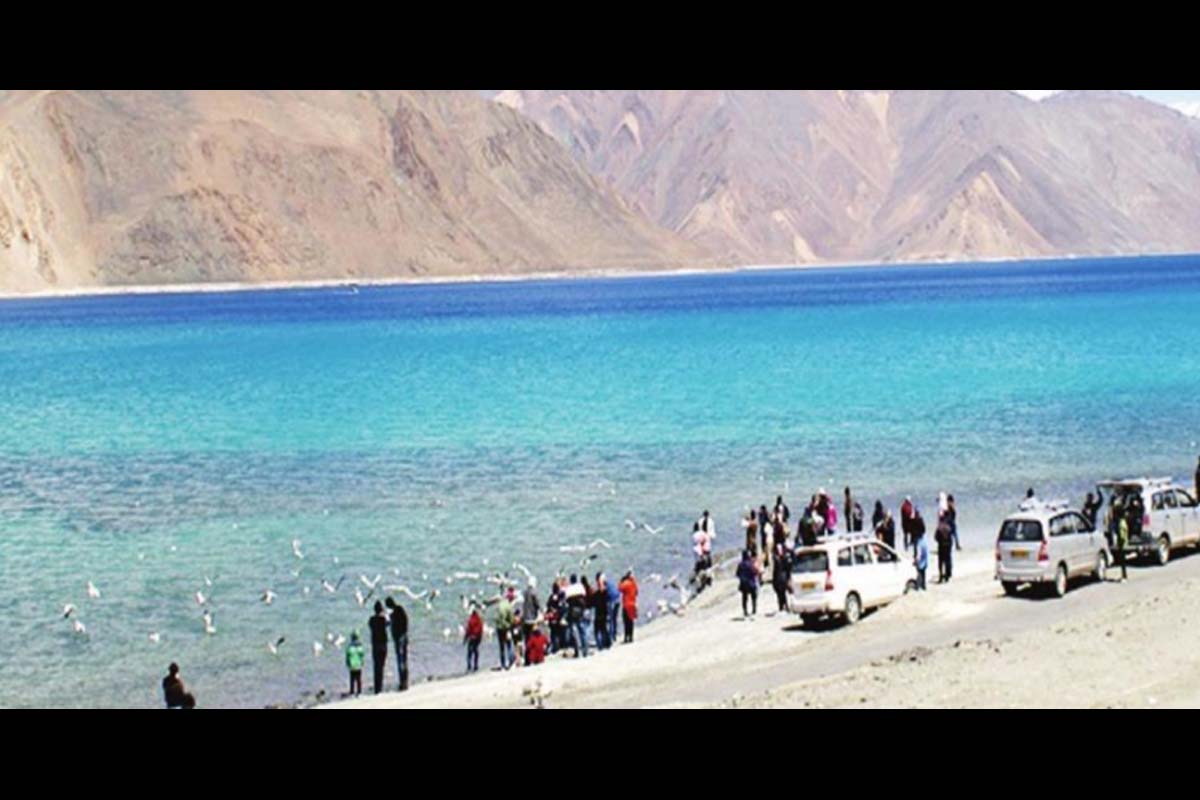Cong defeated ‘Bangladesh’ in semis, will rout ‘Pakistan’ in finals: Reddy
Reddy was addressing a meeting of the Congress social media team and took digs at both the BJP and the BRS.
Leh and Ladakh are exquisitely beautiful and include several monasteries, stupas and indigenous markets that draw myriad visitors from across the world.

Photo: SNS
We were filled with gusto on hearing about our tour to Leh and Ladakh, via Kashmir. The trip came as a breath of fresh air after the rigorous schedule of my first semester in school. After reaching Srinagar, we were astounded by the beauty of the city. At night, the lights shimmering on the mountains surrounding the picturesque Kashmir valley presented a solitary view. At dawn, the shikaras floating on the Dal Lake appeared desolate and forsaken by tourists. The city streets were stringently guarded by military forces and shops were closed. It felt so unfamiliar, compared to the Kashmir that we visited six years ago: boisterous, city streets bustling, swarming markets and the Dal Lake teeming with innumerable commuters. The Dal Lake served as the economic hub and lifeline of Srinagar. At present, despite the tense and anxious ambience, the beauty of Kashmir remains unchanged. The numerous apple orchards had specks of bright red, juicy fruits dotting the green landscape amidst the distant mountains.
The next morning, we set out for Kargil. On the way, while travelling through Zojila Pass (zero point, altitude: 3,528 metres), we chanced upon a traffic jam. In the three-hour time span, we were caught amidst a severe snowstorm. Due to the blizzard and icy cold breeze, we were unable to clearly comprehend the landscape for a while. Later, we were entranced by the seemingly magical, crystal-shaped snowflakes, continually tumbling down, settling on top of each other, creating a white cover over the distant mountain peaks. When the sun rays fell on the frost-covered mountain peaks, they appeared to be built out of molten gold.
The Kargil War Memorial, dedicated to the Indian army at Drass, located near the legendary Kargil battlefield, exhibited statues of valiant army generals, confiscated arms and ammunitions of the enemy, armaments used by the Indian army, maps indicating occupied posts and checkpoints, and images and anecdotes of the victorious forces. We were awed by the gallantry of the fallen soldiers and solemnly paid obeisance to their memoirs.
Advertisement
The journey from Kargil to Leh was speckled with fascinating visits, including Fatula Top (A pass at an altitude of 13,479 ft), Magnetic Hill and the notable La Mauyuru Monastery. Magnetic Hill is a unique spot where a vehicle gains momentum and starts rolling uphill even if it is halted completely when kept in a marked spot.
It is an illusion created by the layout of the area and alignment of the hills due to which the winding road actually travelling downhill appears to be heading uphill; hence, the vehicles parked in the marked spot appear to defy gravity. The La Mauyuru Gompa is an eminent Buddhist monastery in the Ladakh region and houses ancient Buddhist relics.

As we reached Leh, exhausted and drained, a refreshing dinner of bowls of fuming thukpa (noodles and herbs cooked together in a broth) and plates of delicious steamed lamb momos awaited for us. After enjoying the sumptuous dinner, we retired to our rooms to prepare ourselves for the next day. In Leh, we visited the ancient Shey monastery and palace, located 15 km to the east of Leh city.
Shey is also known as the ancient capital of Ladakh and the remains of the ancient castle are still extant at the upper ridge of the hillock. The ancient Shey Palace, built during the reign of King Deldan Namgyal in the 17th century, was the royal residence of the monarch of Ladakh. Built atop a hill and perched high above the township, the impressive five-storied palatial quarters, skilfully carved out of stone and timber of poplar and willow trees, overlooks the lush green cultivated fields of Shey village.
The palace facade facing east is riddled with numerous windows, including large overhanging balconies and the main entrance porch. The palace complex has a three-storey high shrine, housing a gigantic coppergilded bust idol of the Buddha.
Shakyamuni plated with gold and studded with gems and precious jewels is a statue built at the behest of King Deldan Namgyal as a memorial to his father, King Sengge Namgyal, one of a kind in the region. The palace complex also owns a library, which preserves rare ancient books on Buddhism and the largest Changchub Chhortan (stupa of enlightenment) in Ladakh. Following that, we visited the Thiksey monastery, which is reputed for the resemblance it bears to the Potala Palace in Tibet. The walls are beautified by murals and paintings. It accommodates a wide gamut of Hindu deities along with a mammoth bust idol of Lord Buddha, similar to the statue in the Shey Palace, and miniatures of his numerous avatars according to the principles of Mahayana Buddhism.
These avatars are a testament to the secularism in traditional Buddhist belief. The following day, we departed for Nubra Valley. It is a tri-armed valley located to the north-east of the Ladakh region, separated from the surrounding mountainous terrain by the Shyok River — a tributary of the Indus River, which meets the Nubra River originating from the Siachen glacier.
The Nubra valley is a considerably large and separates Ladakh and Karakoram ranges. During our journey, we passed through the frozen Khardungla Pass, situated at an altitude of 5,359 metres, which is apparently the highest motorable pass in the world.
We also visited the Siachen border, which separates India, Pakistan and China. From the lofty mountainous paths, the valley, with its scant but evergreen vegetation, extensive sand dunes, grey sandbanks, light blue and clear river water, pebbled river banks and shallow river beds looked inexplicably calm, solitary and beautiful. The valley is inundated on both sides by the clear river water.
It seemed as if an expert artist has flawlessly painted the picture of paradise on earth. The Diskit monastery is located in the Diskit village of the valley and is a sub-gomfa of the Thiksey monastery. The 33-ft-tall colossal statue of Maitreya Buddha facing Pakistan is a symbol of everlasting peace and prosperity. We visited the Turtuk village in the Shyok Valley, which is the last major village before the LoC (Line of Control) between India and Pakistan.
The village provides a bird’s-eye view of the Shyok valley and the Karakoram ranges. It is the only Balti village under Indian administration. The Balti and Turtuk museums, traditional hanloom markets, water mills and waterfalls flowing through the village are the valley’s prime attractions. The residents of the village are expert horticulturists and extensively practise mixed farming. The village is extremely clean and green because of the ecofriendly nature of the locals. At Hunder district, we enjoyed a doublehumped camel ride over the silvery sand dunes.
Last but not the least, we set out for the Pangong Tso Lake, well-known worldwide for its scenic beauty. It is 143 km in length and extends from India to China. The limpid, sparkling and pristine water, absolutely calm but not stagnant with occasional ripples, reflected the hues of the blue firmament. The captivating panorama enthralled us completely.
During our return journey from Pangong Lake to Leh, we passed through the frozen roads of the Changla Pass and experienced a second bout of snowfall. We were reluctant to leave behind the exquisite beauty of Leh, but our tour was nearing its end. However, the visit to Leh was thoroughly refreshing and memorable.
Advertisement